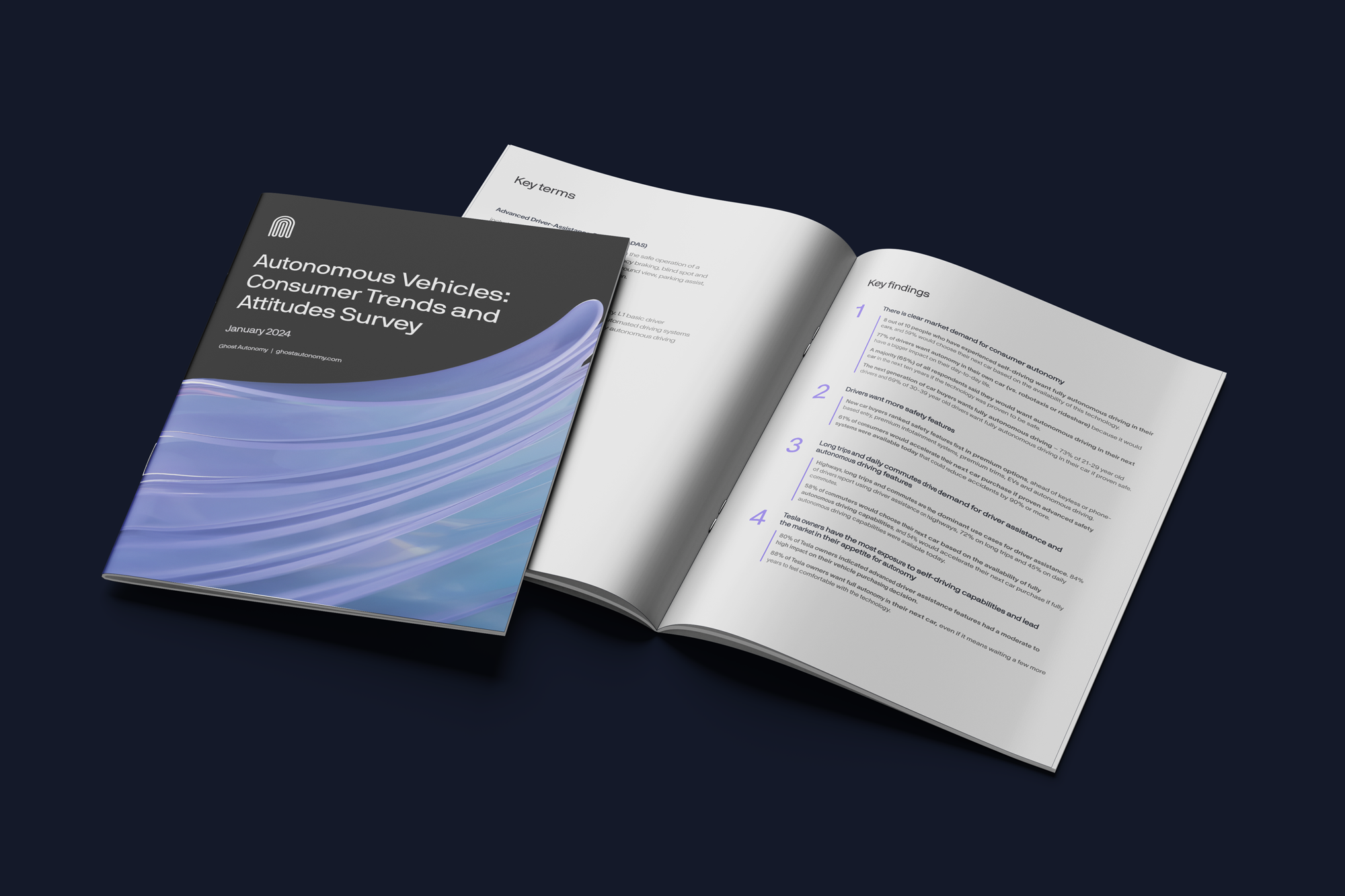Ghost was built to generalize with universal AI, no HD-Maps, and fully auto-labeled training data. In this video Ghost drives autonomously on a road it’s never seen before – Interstate 15 from California to Las Vegas, NV, traveling 140+ miles with no safety driver interventions.
Generalization is a (Technology) Choice
One of the biggest challenges with current-generation autonomy stacks is developing them in a manner that generalizes. Many of the typical technology choices – HD-Maps, image-based obstacle and road feature detection, and hard-coded driving logic are all the enemies of generalization. HD Maps are difficult to keep current and become out-of-date, obstacles and road features are and look different in different places, and driving program rules that assume “the way people drive” or “the way humans act” in given places all require that autonomy stacks neural networks be re-trained and logic be re-developed as new locations are added to the driving domain (ODD). Such non-generalizing technology approaches generally frustrate consumers and result in slow, limited roll-outs of autonomy – L2+ systems that only work on certain mapped roads, robo-taxis that only operate in certain cities and can’t drive to the airport, etc, etc.
When Ghost was architecting the Ghost Autonomy Engine, our focus on scale to mass-market consumer cars necessitated a focus on generalization – people expect to be able to drive their cars wherever they want. It was also practical – while it may be harder to develop a system that generalizes up-front, it pays huge dividends in avoiding long-tail problems that slow roll-out and scale over time.
As such, Ghost made many technology choices that were in service of enabling generalization, including:
- Universal AI: Ghost’s core visual perception network, KineticFlow, isn’t based on image recognition, and thus doesn’t have to be explicitly trained on obstacles to understand and avoid them. KineticFlow isn’t phased, for example, if fire trucks look different in Detroit vs. Germany.
- No HD-Maps: Ghost drives first-person in real time, just like a human does, without the need to have the road pre-mapped. This eliminates challenges with driving in new places without maps, or issues when maps become outdated.
- Fully auto-labeled training data: While it is important that Ghost’s lane/scene understanding neural network is trained with sufficient training data to represent the diversity of lane marker and lane construction parameters where we drive, this process is highly-automated and very scalable as it requires no manual human data labeling.
While no one technology is a silver-bullet for generalization, we are always seeking to design the Ghost Autonomy Engine to generalize, and validate this generalization through both simulation and of course actually driving on new roads continuously.
Generalization in Action
While driving on never-before-seen/driven roads isn’t a comprehensive validation strategy in itself (much more on the topic of validation to come), it’s still always an exciting demonstration that generalization is working. As such, Ghost is in an expansionary phase now. We first developed our technology and validated it on closed track environments, we started driving on the freeways around the Bay Area in 2022, and in 2023 we are focusing on proving generalization by expanding our ODD, which currently includes freeways in CA, NV, MI, and a few highways in Canada.
In the video above you’ll see Ghost drive on a new road it’s never seen before – Interstate 15 from Barstow, CA to Las Vegas, NV. Ghost maintains an average highway cruising speed of 71mph, with the only stop being at the state line to swap to NV autonomy plates as the law requires. Enjoy!







